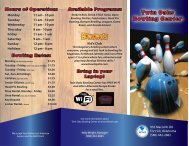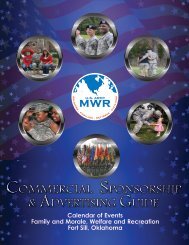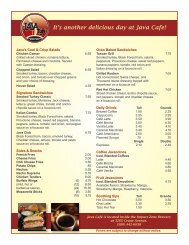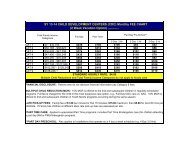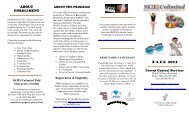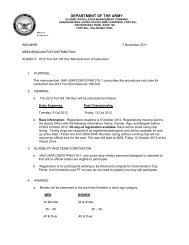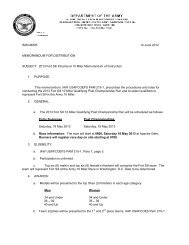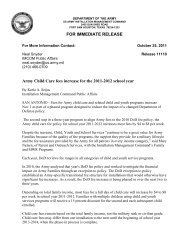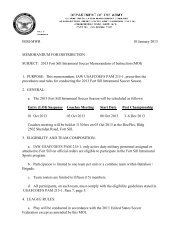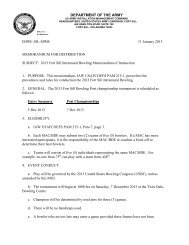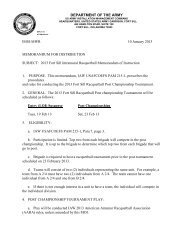Preparing and Managing Correspondence - Fort Sill MWR
Preparing and Managing Correspondence - Fort Sill MWR
Preparing and Managing Correspondence - Fort Sill MWR
You also want an ePaper? Increase the reach of your titles
YUMPU automatically turns print PDFs into web optimized ePapers that Google loves.
ambassador at large<br />
b. Titles following names or titles used alone.<br />
(1) Capitalize titles following proper names, or used alone as substitutes for names, when they indicate preeminence.<br />
John Adams, President of the United States; the President, the President-elect, the Executive,<br />
the Comm<strong>and</strong>er in Chief, Ex-President Adams, a former President<br />
Thomas Howells, Vice President of the United States; the Vice President<br />
B. A. Rowl<strong>and</strong>, Secretary of State; the Secretary, the Acting Secretary, the Under Secretary,<br />
the Assistant Secretary, the Director, the Chief, or the Assistant Chief<br />
(2) Capitalize titles in the second person.<br />
Your Excellency<br />
Madam Chairman<br />
Mr. Secretary<br />
(3) Do not capitalize when used in a general sense or when not indicating preeminence.<br />
Burns Mason, president of the Potomac Railway; president-elect of the union, the executive’s suite,<br />
a young comm<strong>and</strong>er in chief, ex-president of Cullen Institute, a former president of the university.<br />
Caleb Johnson, vice president of the Exchange; the vice president of SDA<br />
secretaries of the military departments (part of the clerical staff), but Secretaries of the military departments<br />
(heads of Army, Navy, Air Force); the director, or chief, or assistant chief of the laboratory<br />
Section II<br />
Compound Words<br />
B–4. General<br />
a. A compound word conveys a unit idea that is not as clearly conveyed by separate words. The hyphen not only<br />
unites but separates the component words to aid readability <strong>and</strong> correct pronunciation.<br />
b. In this section, basic rules for compounding are given first <strong>and</strong> are followed by guides to forming solid<br />
compounds <strong>and</strong> to hyphenating unit modifiers. Instructions are also given on adding prefixes <strong>and</strong> suffixes <strong>and</strong> on<br />
putting together combining forms.<br />
B–5. Basic rules<br />
a. Omit the hyphen when words appear in regular order <strong>and</strong> the omission causes no confusion in sound or meaning.<br />
after action<br />
banking hours<br />
blood pressure<br />
book value<br />
census taker<br />
day laborer<br />
eye opener<br />
fellow citizen<br />
life cycle<br />
living costs<br />
mountain laurel<br />
palm oil<br />
patent right<br />
real estate<br />
time frame<br />
training ship<br />
violin teacher<br />
b. Compound two or more words to express an idea that would not be as clearly expressed in separate words.<br />
66 AR 25–50 • 3 June 2002



